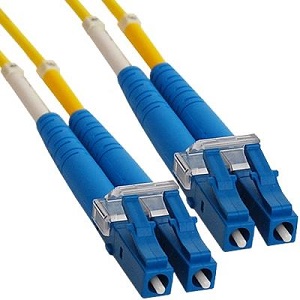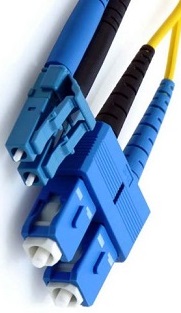| |
Network Cables General Description
Ethernet was originally based on the idea of computers communicating over a shared coaxial cable acting as a broadcast transmission medium. The methods used
show some similarities to radio systems, although there are fundamental differences, such as the fact that it is much easier to detect collisions in a
cable broadcast system than a radio broadcast. The common cable providing the communication channel was likened to the
ether and it was from this reference that the name "Ethernet" was derived.
From this early and comparatively simple concept, Ethernet evolved into the complex networking technology that today underlies most LANs. The coaxial cable
was replaced with point-to-point links connected by Ethernet hubs and/or switches to reduce installation costs, increase reliability, and enable
point-to-point management and troubleshooting. StarLAN was the first step in the evolution of Ethernet from a coaxial cable bus to a hub-managed, twisted-pair
network. The advent of twisted-pair wiring dramatically lowered installation costs relative to competing technologies, including the older Ethernet
technologies.
Above the physical layer, Ethernet stations communicate by sending each other data packets, blocks of data that are individually sent and delivered. As with
other IEEE 802
LANs, each Ethernet station is given a single 48-bit MAC address, which is used to specify both the destination and the source of
each data packet. Network interface cards (NICs) or chips normally do not accept packets addressed to other Ethernet stations. Adapters generally come programmed
with a globally unique address, but this can be overridden, either to avoid an address change when an adapter is replaced, or to use locally administered
addresses.
Despite the significant changes in Ethernet from a thick coaxial cable bus running at 10 Mbit/s to point-to-point links running at 1 Gbit/s
and beyond, all generations of Ethernet (excluding early experimental versions) share the same frame formats (and hence the same interface for higher
layers), and can be readily interconnected.
Due to the ubiquity of Ethernet, the ever-decreasing
cost of the hardware needed to support it, and the reduced panel
space needed by twisted pair Ethernet, most manufacturers now build the functionality of an Ethernet card directly into PC motherboards, eliminating the need for installation of a separate network
card.
Cables carry electrical currents
Besides carrying information,
computer and network cables also carry low voltage power.
Amperes Is the strength of an electric current.
Voltage is the electrical force which moves charges (in electrons) if they can be moved.
Ohms law = amperage * volts = watts.
Watts represents energy per unit time. For example, when a light bulb with a power rating of 50W is on for one hour then the energy used is 50 watt hours.
Quad_Shield_RG6_Coax_Cable

|
Electrical Cable

|
Twisted Pair Eithernet

|
HDMI Cable

|
LC Fiber Optic Patch Chord

|
LC-SC Duplex Single Mode Fiber Patch Cable
 |
Multi Core Cable
 |
Different Types of USB

|
XLR Microphone and Instrument Cable

|
| |
|
|

|
|
